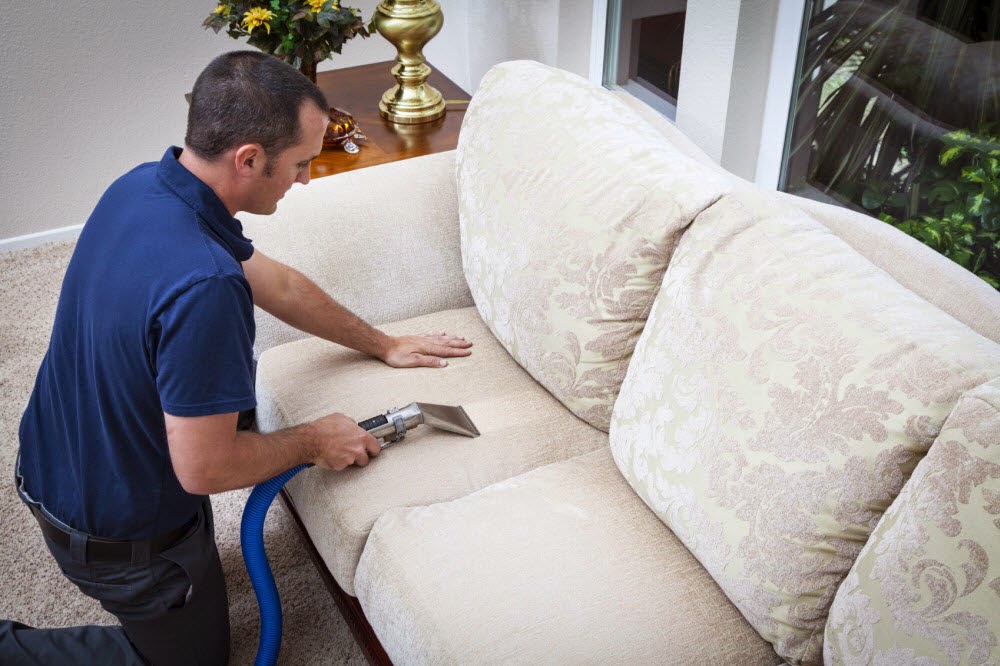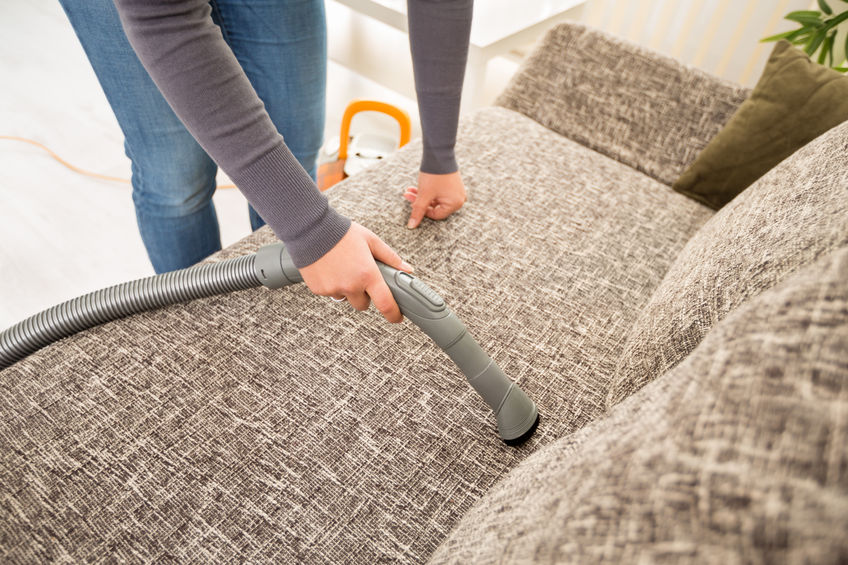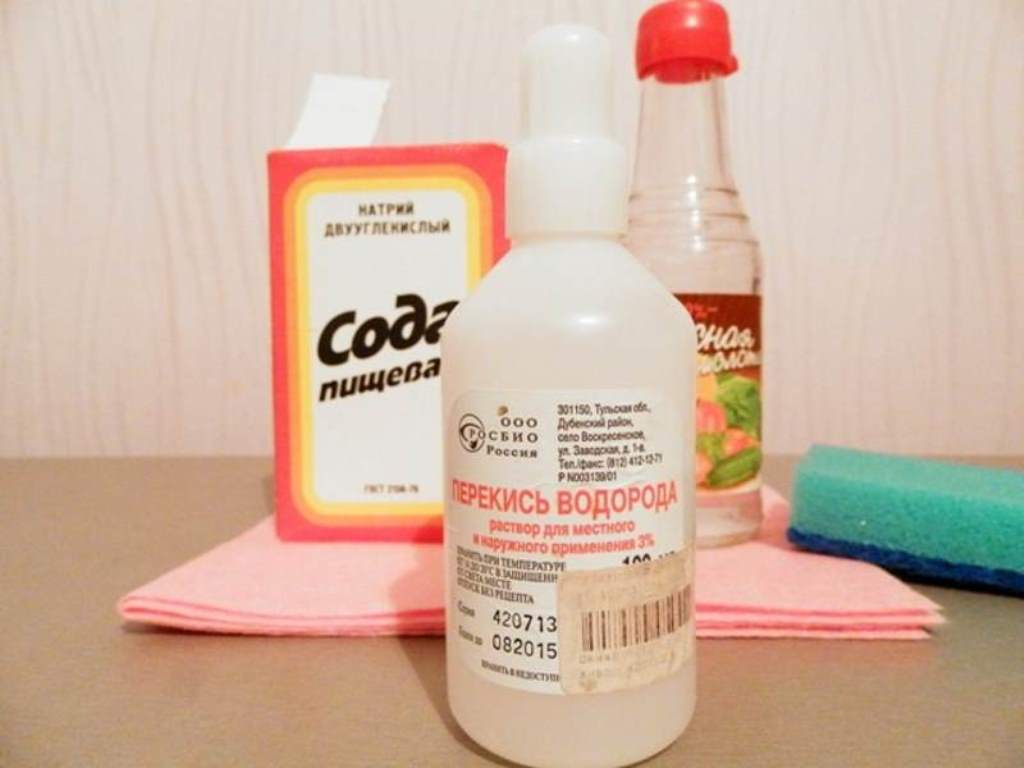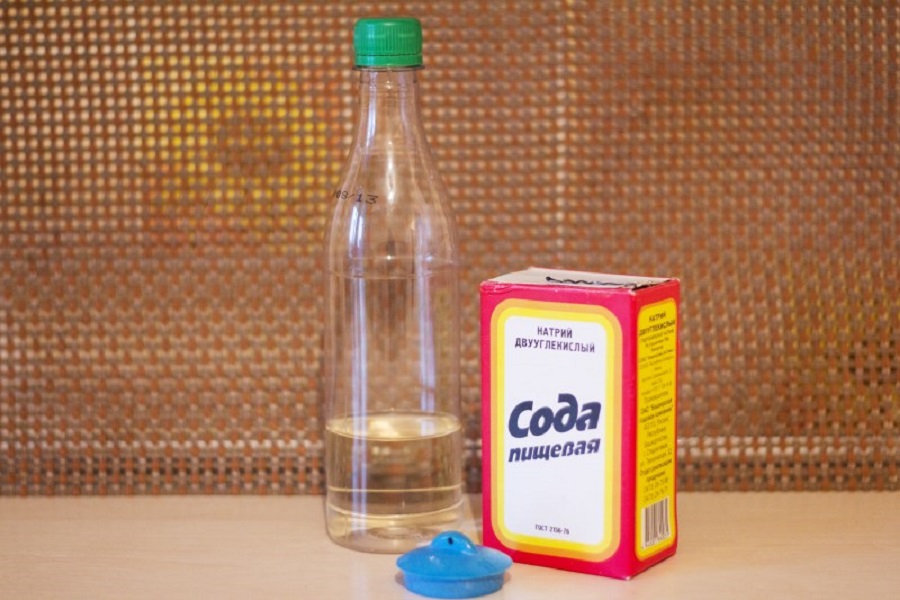We clean the sofa from stains at home
Sofas in apartments are often a favorite place for rest and pastime for the whole family. Here they watch TV, and work, and play, and even eat and sleep. Of course, with this use, very often stains from food, drinks, cosmetics, paints and felt-tip pens appear on the sofa. Calling a cleaning company just to clean the sofa is not profitable. Therefore, a quite reasonable question arises: how to clean the sofa at home.

Cleaning a sofa is difficult: it is not always possible to remove the sofa upholstery. If you use wet cleaning, then soft pieces of furniture are quite difficult to dry well. There are a lot of tools for cleaning textiles at home. Moreover, there are both good old folk remedies and fashionable industrial novelties in the form of various shampoos for furniture.

The best ways to clean your sofa
How to clean a sofa at home depends primarily on the type of contamination. They can be conditionally divided into the following options:
- Dust
- Salinity
- Drink, food and paint stains
- Mold, fungi, bacteria
Another nuance that the old age of the sofa betrays is the loss of the original color of the upholstery. As a result of the action of sunlight, dust and mechanical influences, the furniture coating fades and becomes dull. With the help of simple folk remedies, such as vinegar, you can restore its former brightness.

Depending on the type of dirt, the cleaning method is chosen: dry or wet. Dry methods help to get rid of dust, animal hair, crumbs.
In order to remove grease, dry and wet cleaning methods are used. And stains can only be removed wet.

Traditional methods
Simple products for cleaning upholstered furniture were used by our grandmothers. These methods still work. The main folk methods:
- Soda and vinegar
- Soap solution
- Dishwashing liquid
- Knocking out
- Salt
- Hydrogen peroxide

Soda and vinegar
Every housewife knows these means. These products are versatile and can handle a wide variety of contaminants. They eliminate grease, grease stains, drinks. With the help of vinegar, you can successfully return the upholstery to its brightness. This versatility is due to two points:
- Soda and vinegar are both alkali and acid. These two antagonist substances cause different chemical reactions when interacting with contaminants. Acid acts on something, but alkali acts on something.
- When mixing soda and vinegar, carbon dioxide is released, which aggressively affects the dirt, literally knocking it out of the fibers of the fabric. Carbon dioxide is also good at eliminating odors embedded in the material.

Cleaning procedure: mix 300-400 ml of water, 100 ml of vinegar, 1 teaspoon of dish detergent in a container with a spray bottle. Then add 1 teaspoon of baking soda there and close quickly. After that, immediately spray the product on the spots or on the entire trim. Wait 5-10 minutes and brush over the fabric with a stiff brush. Then wipe the upholstery with a damp cloth and then dry.

In order to return the fabric to its former brightness and color, it is also necessary to add 10 ml of ammonia to the solution. This tool is still excellent at eliminating bacteria, fighting mold and mildew.

Soapy water
Light dirt and simple stains can be removed with soapy water. Also, the solution will cope with fresh greasy stains. But he will not be able to remove old dirt, stains from drinks and grease.

To clean the sofa, rub the soap on a grater, dissolve it in water. The product is poured into a container with a spray bottle and sprayed on the sofa. Then wipe off the dirt with a brush. You can also apply the liquid to a sponge and wipe the upholstery with it.

Dishwashing liquid
With this tool, you can quickly carry out damp cleaning of upholstered furniture and remove small stains. To do this, dissolve 2-3 tablespoons of dishwashing liquid in 1 liter of water and foam the water. Then the foam is collected with a sponge and the upholstery is wiped with it. After that, you need to wipe the upholstery with a damp towel and dry the sofa.

Knocking out
This method is a great alternative to a vacuum cleaner. This method works especially well on lint-free fabrics that are not easy to vacuum. The advantages of embossing are its simplicity and the fact that it does not damage the fabric dyes.

There are dry and wet beating. With the dry method, dust from the sofa is removed with a special plastic spatula or any stick at hand. With the wet method, the sofa is first covered with a wet sheet and then knocked out. This method does not allow dust to scatter around the apartment.

Salt
Salt can effectively remove grease stains, drinks and grease. It is enough to sprinkle fresh stains with salt, which will absorb the substances. Old stains must be removed with salt gruel. Dilute salt with water to a gruel state and apply it to the stain. After 5 minutes, remove the product and wipe with a wet towel.

Cleansing Foam
Foam cleaning works well for velor upholstery. This foam can be prepared from a variety of products:
- Egg white
- Shaving foam
- Detergent
Beat the foam, add salt there and apply it to the upholstery. Leave for 5 minutes and then remove. After that, you need to wipe the fabric with a damp towel.

Purification with hydrogen peroxide
This substance effectively removes dark spots from light or white surfaces. Hydrogen peroxide is mixed with water in a 1: 1 ratio and applied to furniture using a spray bottle. Leave to act for 2 hours, then wipe the upholstery with a damp towel.

Chemicals
In addition to folk remedies, chemical cleaners can also be purchased in stores.Such tools, than cleaning a sofa at home, have their advantages:
- Ease of use: the product is completely ready
- Fast action: usually a few minutes are enough
However, they also have disadvantages:
- May cause allergies
- Corrosive to fabric and dyes

These products contain artificial industrial substances, fragrances and aggressive ingredients - all of which can cause coughing, sneezing, skin rashes or runny nose. Considering that the substances are applied to a large area of furniture, the effect of allergens becomes very strong.

The second drawback of chemistry is that the composition is too aggressive. Regular use of these substances will lead to discoloration of paints and erosion of upholstery. It makes sense to use such funds only in rare cases - when you need to quickly wipe off heavy dirt.
How to clean upholstered furniture at home
Cleaning methods are distinguished between dry and wet. Different methods are used depending on the complexity of the dirt, the frequency of cleaning and the time allocated for cleaning.

In addition to the sofa, you should also regularly look after:
- Armchairs
- Chair seats
- Cushions and poufs
They often forget to clean such furniture, but dust and hair of pets also accumulate here, which becomes a breeding ground for infections and bacteria. As a rule, dry cleaning is used to care for small upholstered furniture.
Dry cleaning
This method is the simplest, since it does not require the preparation of special solutions, drying of furniture. Dry cleaning is recommended once a week. For her use:
- Brush
- Vacuum cleaner
- A spatula for knocking out.
The easiest way to clean your furniture is with a brush. A product with stiff bristles is suitable for this. The brush cleans well velor, pile, fur capes.

It makes sense to use a vacuum cleaner for tapestry or matting. Effectively combine vacuum and brush cleaning.
Wet cleaning
Wet cleaning is recommended once a month. This rhythm will allow you to keep upholstered furniture always in a neat and new look. Regular wet cleaning will protect against heavy grease and old stains.
Wet cleaning has one feature - after it you need to dry the furniture, otherwise mold will start in it. Cover the sofa with a bedspread, blanket or cape only after it is completely dry.

Different ways are used to dry furniture:
- Vacuum cleaner
- Dry towels
- Hair dryer
- Natural drying
The vacuum cleaner uses air circulation to help the moisture evaporate faster. This allows the sofa to dry naturally. At the same time, it helps to remove moisture from deep layers, if it gets there.
Dry towels only help dry the top layer of the upholstery. To do this, they are laid out on furniture, and after 1-2 minutes they are removed. The procedure can be repeated several times.

Dry deep and highly moist areas with a hairdryer. It is usually used when something is spilled on the product. In this case, it is better to dry with cold air. High temperatures can dry out the cushion filling. When drying, the hair dryer should also not be brought too close to the product, it is better to keep it at a distance of 20-30 cm.
Natural drying is best done with the windows open - this will dry the furniture faster. They always complete all drying procedures. However, this method is not as fast.

When you need to dry clean your sofa
In the most difficult cases, when the sofa is stained with felt-tip pens, oil paints, ink, only dry cleaning will help. For a professional procedure, it is necessary to call a team that will quickly remove stains. However, such services are not cheap.

Prevention of contamination
In order to avoid staining, it is recommended to use capes, bedspreads or covers. In any furniture store, they are presented in a wide range. These capes are easy to remove and wash. They can also be shaken out regularly to keep dust, pet hair and bacteria out of the apartment. The use of capes and bedspreads is not only hygienic, but also allows you to periodically change the interior.

VIDEO: How to clean a sofa at home.





